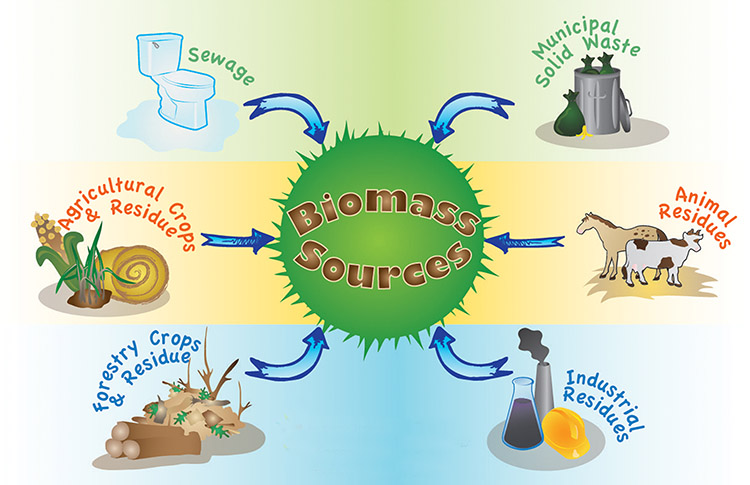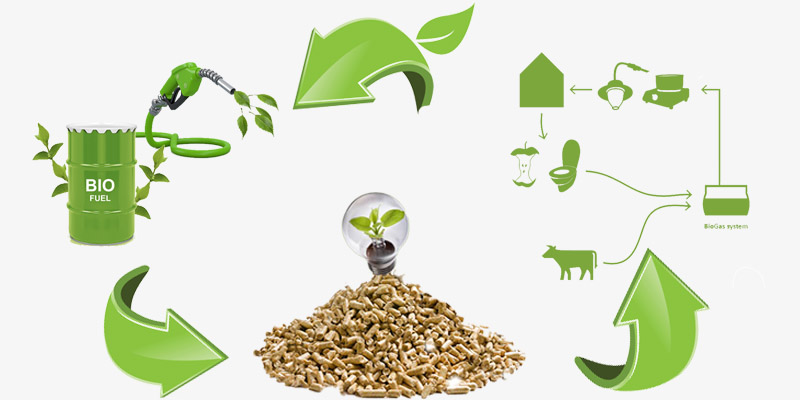
Biomass energy is the energy that has been stored in biomass materials. It is not only a type of solar energy that use biomass as a carrier, but also the only renewable carbon source. The green plants store biomass energy through daily photosynthesis which convert the solar energy to chemical energy. Through photosynthesis, plants can convert 200 billion ton carbon content in carbon dioxide to carbohydrate, and at the same time, the plants also stores 3╳1013GJ solar energy, which is 10 times of current global energy consumption.
Although there are abundant biomass materials around the world, burning biomass material directly will create huge pollution to the environment. Therefore, in order to utilize the biomass energy, there are multiple different types of biomass fuels that are made from biomass materials.
Main Types of Biomass Fuels
Biomass energy is different from fossil fuels and other new energies. It is one of the main renewable energies in the world which contains the features and advantages of both the two types of energies. There are biomass fuels in three states, solid, liquid, and gas.
Solid Biomass Fuel
For solid biomass fuel, we have biomass pellets fuel which is compressed by pellet mills. Biomass pellet is a new type of biomass fuel which start being bulk manufactured in early 1980s, but now has already becoming the most important substitute for fossil fuels.
Biomass pellet manufacturing technology consists of several different processes: initial size reduction, drying, initial sieving, grinding, pelletizing, cooling, sieving. For biomass pellet plants, after the pellet manufacturing process, the packaging and storage process are also needed.
Solid biomass pellet maintains the advantage of easy transport and storage, it has been applied in different fields, such as electricity generation, industrial boiler heating purpose, residential heating purpose and cooking. There are different types of biomass pellets used to supply different markets, such as wood pellets, EFB pellets, rice husk pellets, straw pellets and so on. With the rapid development of biomass pellets, thousands of biomass pellet plants around the world are manufacturing different types of biomass pellets for different markets. In order to regulate the biomass pellet specification and quality, many countries has established their own biomass pellet standard to control the biomass pellet quality. The most famous biomass pellet standard is EN pellet standard, which has established by European Commission.
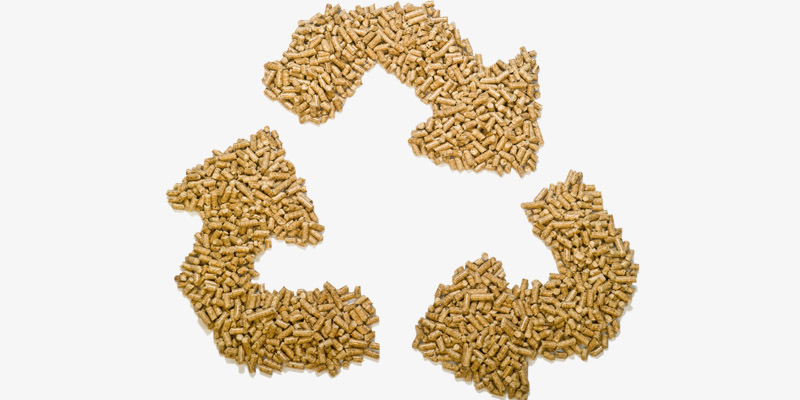
Liquid Biomass Fuel
For liquid biomass fuel, there are biofuel ethanol, biodiesel, biobutanol, and so on.
Bioethanol is the absolute ethyl alcohol with the extracting concentration over 99.5%. Like biomass pellet, bioethanol is also a type of new energies that aimed to reduce petroleum consumption and secure national energy safety. As we all know, octane number is one of the most important properties of gasoline. Therefore, using bioethanol as the gasoline additive can increase the octane number, and reduce the pollution of fossil fuels.
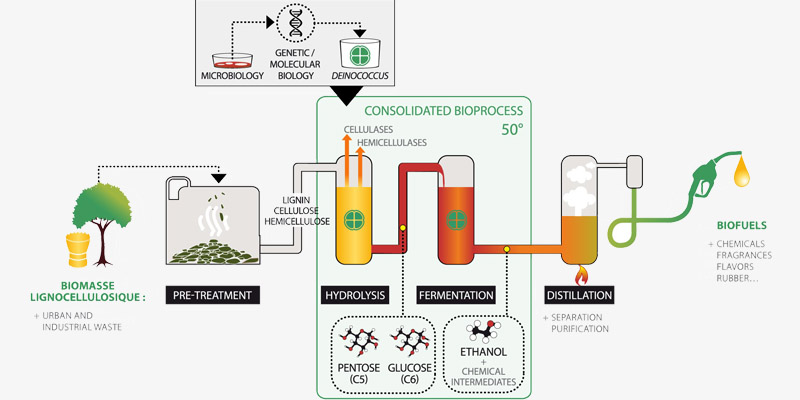
Biodiesel is also a type of clean renewable energy just like biomass pellets. It is a biomass liquid fuel which is made from oil crops like soybean and rapeseed, fruits of oil plants such as oil palm and pistacia chinensis, oil aquatic plant like engineered microalgae and animal oil and waste oils and fats. It is a quality substitute for petro-diesel.

Biobutanol is type of biomass fuel that is similar with bioethanol. It shares the similar raw materials and manufacturing technology with bioethanol. Biobutanol has low steam pressure, low corrosive property, and large tolerance level to contaminated water when mixed with gasoline. Therefore, compare to other liquid biomass fuels, biobutanol has a higher mixture ratio with gasoline, and there is no need to remould cars. Moreover, biobutanol is a high energy content liquid biomass fuel that can support cars for 10% more mileage than gasoline and 30% more mileage than bioethanol.

Gas Biomass Fuel
For gas biomass fuel, methane, also known as biogas is the main biomass energy we use. It is firstly discovered in the wetland. Many people has the experience of seeing the bubbles comes out of wetland and bilge, if we fired a matchstick, the bubbles can be fired, too. This is the methane that fermented by nature. Methane is a type of burning gas which is fermented by organic biomass materials. Therefore, methane is part of secondary energy sources and also a part of renewable energy sources.
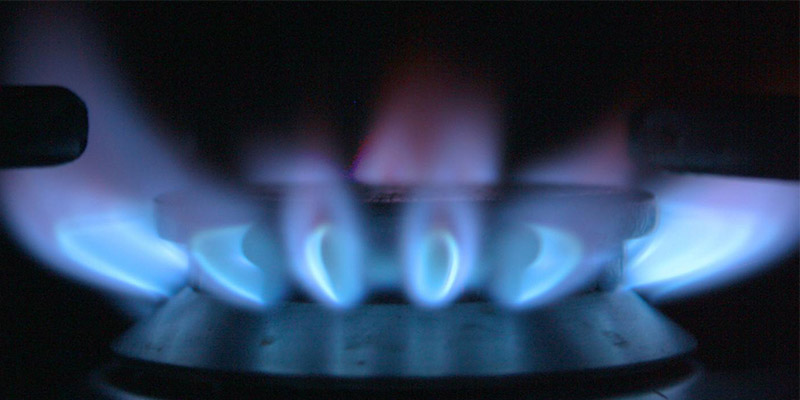
Biomass Fuel Features
Right now, as the environment pollution problem and energy crisis has become the greatest concerns, biomass fuels have been more and more popular. With the following features, biomass fuels become the main substitute of tradition fossil fuels.
Renewability
The raw materials for biomass fuels are renewable materials that can be reproduced through the photosynthesis of plants. Therefore, the biomass fuels has an unending material source.
Low Pollution (Cleanability)
The sulphur and nitrogen contents are extremely low in biomass materials, which makes the SO2 and NO2 emission are also low during combustion. Moreover, for the solid biomass fuel (biomass pellets), the ash residue of biomass pellets is much lower than coal.
Sufficient Burning Performance
Biomass material has high volatile component which makes biomass fuel easy to burn. Moreover, the majority of biomass volatile components can be fully released at the temperature of 400℃. But coal can only release 30% volatile component at the temperature of 800℃.
Abundant Biomass Quantity & Wide Distribution
Biomass energy is the fourth largest energy source of the whole world, right after coal, petroleum, and natural gas. Right now, among the world total energy consumption, biomass energy maintain 14% of the total energy consumption. For the developing countries, biomass energy consumption holds 40% of their total energy consumption.
